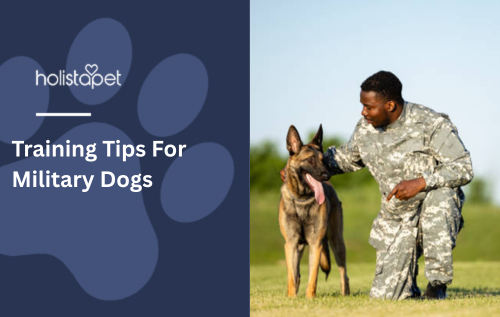Military dogs are not just loyal companions—they are elite partners trained to handle some of the most demanding situations imaginable. From detecting explosives to performing search and rescue missions, these canine heroes rely on specialized training techniques to stay sharp and effective. If you’ve ever wondered how these amazing dogs are trained or want to apply similar techniques for discipline and obedience in your own pet, this guide will help you understand the essentials of training military dogs and how to adapt them for everyday use.
 Understanding Military Dog Training
Understanding Military Dog Training
Military dog training goes beyond the basics of sit, stay, and fetch. It focuses on obedience, discipline, and mission readiness. Handlers train their dogs to respond to commands instantly, even under high-stress situations or in noisy, chaotic environments.
This level of obedience requires consistency, patience, and a strong bond between the handler and the dog. The training starts with simple obedience drills and gradually progresses to more complex exercises like tracking scents, detecting explosives, and performing tactical maneuvers.
Key Training Tips For Military Dogs
1. Start with Obedience Foundation
Every great military dog begins with mastering basic obedience. Commands like sit, stay, heel, and come form the backbone of all advanced training. Consistency is key—use clear voice commands and reward-based reinforcement.
2. Focus on Mental and Physical Exercise
Military dogs must be strong both mentally and physically. Engage your dog with obstacle courses, long-distance running, and scent-based games to build endurance and mental sharpness.
3. Build Trust and Connection
Trust is essential between a handler and their dog. Positive reinforcement, gentle correction, and spending time together create a strong partnership. Remember, a dog that trusts its handler performs better under pressure.
4. Use Desensitization Techniques
Expose your dog to loud noises, crowds, and unfamiliar environments early on. Gradual exposure helps them remain calm and focused even in chaotic conditions—just like trained military dogs do during missions.
5. Teach Specialized Skills
Depending on the role, military dogs learn to detect explosives, search for missing persons, or even perform security patrols. You can apply similar training principles for home protection or advanced obedience goals.
 Frequently Asked Questions
Frequently Asked Questions
1. What breeds are commonly used as military dogs?
German Shepherds, Belgian Malinois, Labrador Retrievers, and Dutch Shepherds are the top choices due to their intelligence, loyalty, and high energy levels.
2. How long does military dog training take?
Typically, it takes between 12 to 18 months for a dog to become fully operational. However, training never truly stops—it continues throughout the dog’s service.
3. Can civilians train their dogs like military dogs?
Absolutely! While your dog may not need to detect explosives, applying military-style training techniques can improve obedience, focus, and behavior at home.
4. How are military dogs rewarded during training?
Handlers use positive reinforcement, including treats, toys, and praise. The goal is to associate commands and actions with positive outcomes, keeping the dog motivated.
5. Do retired military dogs make good pets?
Yes! Retired military dogs are loyal, disciplined, and affectionate. They often adapt well to home life, especially with experienced owners who understand their needs.
Final Thoughts
Military dog training demonstrates what’s possible when discipline meets compassion. These incredible animals are not only brave but also deeply bonded to their handlers through trust and respect. Whether you want to train your dog for obedience, agility, or protection, applying these military-style training tips will help strengthen your relationship and improve your dog’s performance.
Remember—training takes time, patience, and consistency. But the reward of having a well-disciplined, loyal, and intelligent dog is worth every moment of effort.
Helpful Notes
-
Always use positive reinforcement instead of punishment.
-
Keep training sessions short and engaging to maintain your dog’s interest.
-
Introduce challenges gradually—build confidence step by step.
-
Maintain regular veterinary checkups to ensure your dog’s physical readiness.
-
Training should be a bonding experience, not just a command session.


 CBD Oil for Dogs - Fast Acting
CBD Oil for Dogs - Fast Acting
 Chicken Flavored CBD Oil For Dogs - Easy Dose
Chicken Flavored CBD Oil For Dogs - Easy Dose
 Salmon Flavored CBD Oil For Dogs - Highly Rated
Salmon Flavored CBD Oil For Dogs - Highly Rated
 CBG Oil for Dogs and Cats - Loved by Thousands
CBG Oil for Dogs and Cats - Loved by Thousands




Leave a comment
This site is protected by hCaptcha and the hCaptcha Privacy Policy and Terms of Service apply.